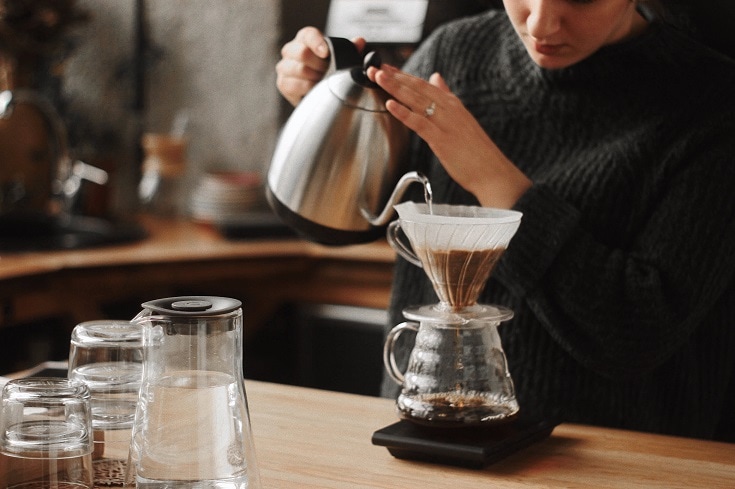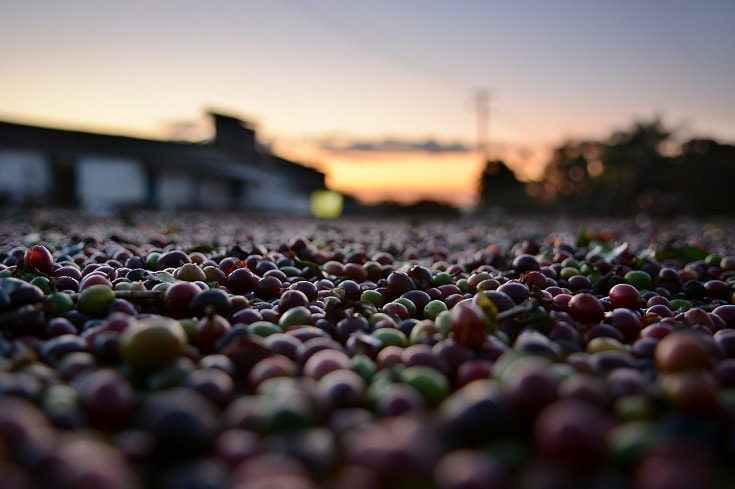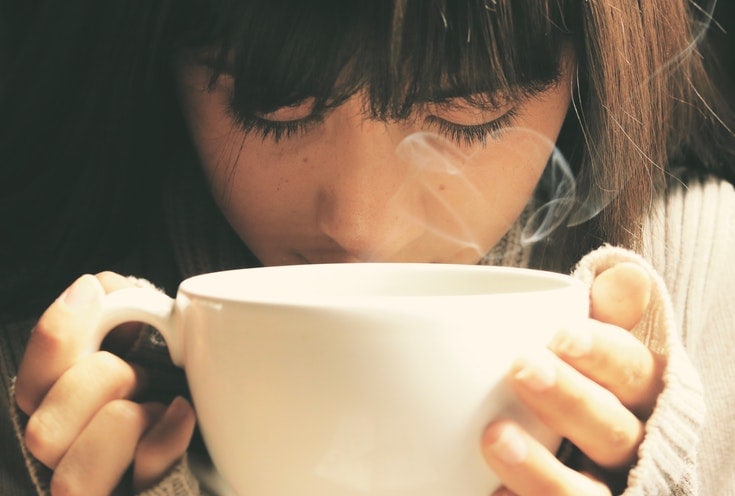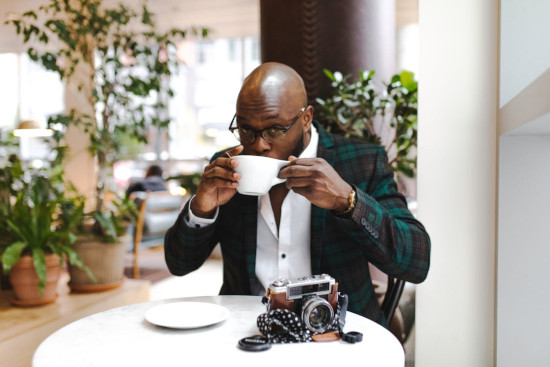
If you are a coffee lover, you most likely spend a lot of time drinking the brew, but how often do you spend learning about it? If you want to take your coffee status from pro to aficionado, you need to learn all you can about this fruit — and yes, it’s a fruit! This is what separates the novice from the professional.
Learning about coffee and all its details can take some time, however. Don’t be discouraged, though. In this article, we will outline all the major areas you need to be knowledgeable about to reach aficionado status. We will get you started on your journey, and show you how to learn the rest on your own.
If you are ready to familiarize yourself with this coffee brew, keep scrolling below!

How to Become a Coffee Aficionado: The Basics
If you are on the journey to all-knowing coffee knowledge, chances are you are pretty firm on the basics. That being said, there may be areas of the basics you have not considered. Take a look at the details below to see where you might need to strengthen your skills.
Buying Coffee
We know you have purchased a lot of coffee in your time. To be a true pro, however, it is important to know what you are buying. First, you want to ensure that you are buying your beans from a reputable farmer. Those that pay close attention to issues such as climate change, soil composition, altitude, etc are important for a good cup of joe, not to mention, the environment at large.

Take a look at some other points to consider when picking out your coffee:
- Whole Beans: There is a world of difference between whole beans and ground beans. Whole beans will give you the freshest taste with the bold, full flavor you are looking for.
- The Peak: Coffee beans are at their peak in the first two to three weeks after roasting. Reputable roasters will have this information available to you.
- Avoid Sales: This runs hand and hand with the tip above. Typically, the beans you find on sale are replacing those that have just come in. This means the sale beans are likely past their peak.
- Try Different Flavors: You also want to branch out from your typical brew. Try different flavors, brands, boldness, and country of origin to widen your horizons.
Learn How to Use Manual Brewers
Nothing compares to old-school manual brewers. If you have only ever used a drip coffee maker, the difference in taste, flavor, and even texture is astounding. For that reason, plus to further your quest for coffee knowledge, you want to familiarize yourself with manual presses. There are several different models available such as a French press, pour-over, coffee cones, etc.
Beyond that, you want to make sure you are grinding your own beans. An efficient coffee grinder can be had for a low cost, but it opens up many different caffè experiences.
The benefits of schooling yourself is not confined to just knowledge, either. Take a look at the different aspects of brewing your java:
- Allows you to personalize your coffee and try different beverages like espresso, macchiato, cappuccino, and much more.
- Experiment with different coffee grind textures that affect taste, texture, and overall flavor.
- You can try different kinds of milk and sweeteners along with the order in which the ingredients are used. Try soy milk, frothed milk, and adding milk over an espresso.
- Experiment with what brews are better for what particular cup of coffee.
A true coffee aficionado knows that many things come into play when making your perfect cup. The flavor, aroma, texture, added ingredients, and much more all play a role. Even the look of the brew is important.

How to Brew a Good Cup of Coffee:
There are some basic “rules” for making a good cup of coffee many of which are overlooked by the basic drip coffee drinker. To make a traditional cup of joe, take a look at these steps below:
Step 1: Check the freshness of your beans. Ensure you are using beans that are at their peak. If they are brittle and dry, you get a bitter-tasting cup. Too moist, and the brew has a “green” flavor.
Step 2: You also want to choose high-quality beans. Again, looking into the brand or farmer, plus discovering their location, roasting methods, harvesting methods, etc will help you find a quality coffee.
Step 3: Although we went over this already, you want to grind your beans. The freshness alone is well worth the effort.
Step 4: One step that is often overlooked is the water used in the brewer. If possible, use fresh spring water, but other bottled forms will do. Tap water can affect the taste of your coffee due to minerals and other things that are added like florid.
Step 5: Brew manually — for the reasons already discussed.
Step 6: To get the full scope of your beans, you want to use two-level tablespoons of coffee for your cup. This will make an average-ish single espresso shot.
Step 7: The one thing you don’t want to do is reheat your coffee. It strips it of its natural flavors and aromas due largely to the microwave’s mode of heating. Better to make a fresh cup instead of reheating on the stove, as well.
Things to Avoid
Along with the basics above, there are a few things that you should avoid if you want to step up your coffee game. For the most part, you want to avoid ground coffee, stale beans, and irresponsible farmers. That being said, what you want to concentrate on is staying clear of modern machines that are not what they claim to be.
There are many new brewers available that claim to give a fresh taste, add caffeine, and cut down on calories along with many other claims. We are here to tell you these ideas are mostly false. For example, weight loss coffee that claims to add extra caffeine is a gimmick. The caffeine is in the bean and the brewing method is less important.

Besides that, if you want to keep on the traditional and professional java path, steer clear of steam espresso machines, weight loss coffee, drip brewers with customizable settings, and single-serve brewers like the Keurig. Unfortunately, these are basic drip coffee makers with some added features, but the result is always the same.

The Aficionado Coffee Drinker
Once you have mastered the things above, you will be well on your way to being a true caffè professional. Now, you want to concentrate on three things that will take you to the next level. Those things are origins, smell, and taste. Though they may sound simple, there are a lot more to these three ideas than you would think.
Let’s start with origins.
Learn Coffee Origins
The part of the world where your coffee beans are grown makes a big difference in almost every aspect of the final product-your cup of coffee. It is well-known that factors, such as altitude, make a huge difference in the taste.
First, let’s take a look at the main parts of the world where coffee comes from:
- Honduras
- Panama
- Brazil
- Ethiopia
- Indonesia
- Kenya
- Guatemala

While there are more areas, these are the most popular coffee farming locations that export their beans for wholesale. It is not only the country, however, that indicates the quality of the beans. Environmental factors are also at play.
Climate
As you can likely guess from the list of exporting countries below, coffee beans do the best in warmer climates. It allows the beans to grow strong while producing healthy cherries for harvesting.
Altitude
The altitude is also important for good coffee plants. Conversely from the fact above, the plants grow better at higher altitudes as the air is cooler. The combination of a warm climate and a high altitude keeps the air from getting too cold. Cooler air allows the plant to focus on reproduction versus growth; thus, making more cherries.
Soil
The composition of the soil is also important. Many of the high-altitude areas are based on or near volcanoes. The volcanic soil is rich in nutrients the coffee needs to grow. Many coffee professionals can tell the location from tasting the brew- coffee goals, right?
Pests and Diseases
Although it is common for most plants, coffee is susceptible to pests and diseases. Both of these ailments can decimate a crop and produce beans that are not fit for drinking. Farmers pick locations that have a low likelihood of these things occurring, plus take steps to prevent it from happening.

Handling
How the plant, cherries, and beans are handled is another factor to consider. How the cherries are harvested, how the beans are roasted, and how they are transported makes a difference in what you end up receiving. Even the material in which the beans are shipped will affect the flavor and aroma. The processing procedure varies from farm to farm, but all can attest to the fact that it makes a difference in the final brew.

How to Smell Coffee
The aroma associated with both the beans and the brewed coffee is an important factor in the overall experience. As we know, half of the taste of any given item is in the smell. This is why learning to smell different coffees and beans is important if you wish to reach aficionado status.
Before we get started on how to correctly sample the brew’s aroma, you should know some basic terms that will help you categorize the odor, plus it will make you sound like a professional:
- Enzymatic: This refers to coffee that has a fruity scent.
- Sugar Browning: This is usually reminiscent of toasted nuts or pastry. It generally has a sweet odor.
- Dry Distillation: With this categorization, you should expect notes of leather, tobacco, wood, and smoke.
You also want to keep a few things in mind before breathing coffee scents. First, the underlying notes might not be immediately apparent. It can help to close your eyes. Additionally, the fragrance may not be spot on. It’s better to ask yourself, “what does this remind me of?” Finally, don’t discount what you “sense.” It’s possible to sense different flavors, or a mix of different aromas.

Smelling Coffee
Now that you know the foundation for testing coffee aromas, take a look at this basic step-by-step for doing so correctly:
- Smell the whole beans before you grind them.
- Smell the beans after they have been ground.
- Breathe in the bloom of the ground. This takes place after you have gotten the grinds wet, but before they are hot.
- You also want to breathe in the flavor before you take the first sip. Let the steam waft to your noise versus inhaling it.
Many coffee lovers keep a notebook or pad of paper to write down their thoughts about a new type of coffee. You can always do some research to see where you were right, and what you may have missed.

Tasting Coffee
This is where the fun begins. Tasting coffee, similar to smelling coffee, is an important part of the experience. Like we did above, we first wanted to share some flavor terms/descriptors that will help you on your professional brew quest.
- Sweetness: Fruity tastes and other sweet notes. More or less self-explanatory.
- Acid/Brightness: This alludes to flavors that are more citrus in taste. Look for notes of orange, lemon, blueberry, and even tomato.
- Bitterness: Another self-explanatory taste, bitterness is the amount of acidity in the flavor. The true bitter feel.
- Body/mouthfeel: With this taste, you are not looking for the flavor so much as the feel of the brew in your mouth. Different coffees can have a different texture, weight, and body in the palette.
- Cleanliness: This last taste factor is aimed at what happens after you have swallowed the coffee. Does it leave an aftertaste? Does the bitterness linger? Are the notes pleasant? All of these factors play a role in the overall experience.

Before you start tasting a particular brew, you want to smell the aroma with as many steps as possible from above. You also want to clean your palate by either taking a few sips of water or eating a small portion of white bread.
Another tip for tasting coffee is to close your eyes and try to “sense” what you are tasting. You may find many different flavors such as fruitiness, sweetness, leather, wood, bitterness, and much more. Again like the smell, you may find several different tastes, and you should ask yourself what it reminds you of. Plus, the notebook comes in handy here, as well.
Tasting Coffee
In the world of grading and roasting beans, there is a very technical process called cupping. It is very involved, and not what you want to do if you are looking to experience the brew for drinking. Cupping is meant to not only “grade” the beans, but to refine the roasting process.
Instead, you want to taste your coffee with an ear to the smell, look, feel/texture, taste, etc. This also means you can brew it as you see fit- with a grinder and traditional method, please!
Take a look at these steps for the correct way to taste your brew:
- Step One: Smell the beans, grinds, and coffee as stated in the steps above.
- Step Two: Taste the coffee by taking a small sip, and let it sit in your mouth for a few seconds. You can swish it around if you like. Swallow and look for flavors and notes right away.
- Step Three: Pick out any flavors that come to mind. Along with that, think about the mouthfeel, the texture, and the bitterness. Also, what flavors come first and which ones come as an aftertaste.
- Step Four: Another important tip is allowing your brew to cool in increments while tasting occasionally. Some coffees will change their flavor and texture as they cool. A mark of a great coffee is one that “releases” more flavors as it settles to room temperature.
To give you a more comprehensive look at coffee aromas, take a peek at this flavor wheel.

Based just on taste alone, many people can tell where the beans originated from, what the climate was like, the undertones, and top notes, and the approximate time in the fruit’s life cycle. As you continue to experiment, you will also get better and more spot on!

Conclusion
Being the go-to person in the group for all things coffee is not out of your reach. Like anything else, it will take dedication and education, plus some fun experimentation. We hope this article has helped you on your way to being a coffee aficionado, and it has given you the building blocks you need to continue to coffee greatness.
RELATED READS:
Featured Image: Pinkyone, Shutterstock















